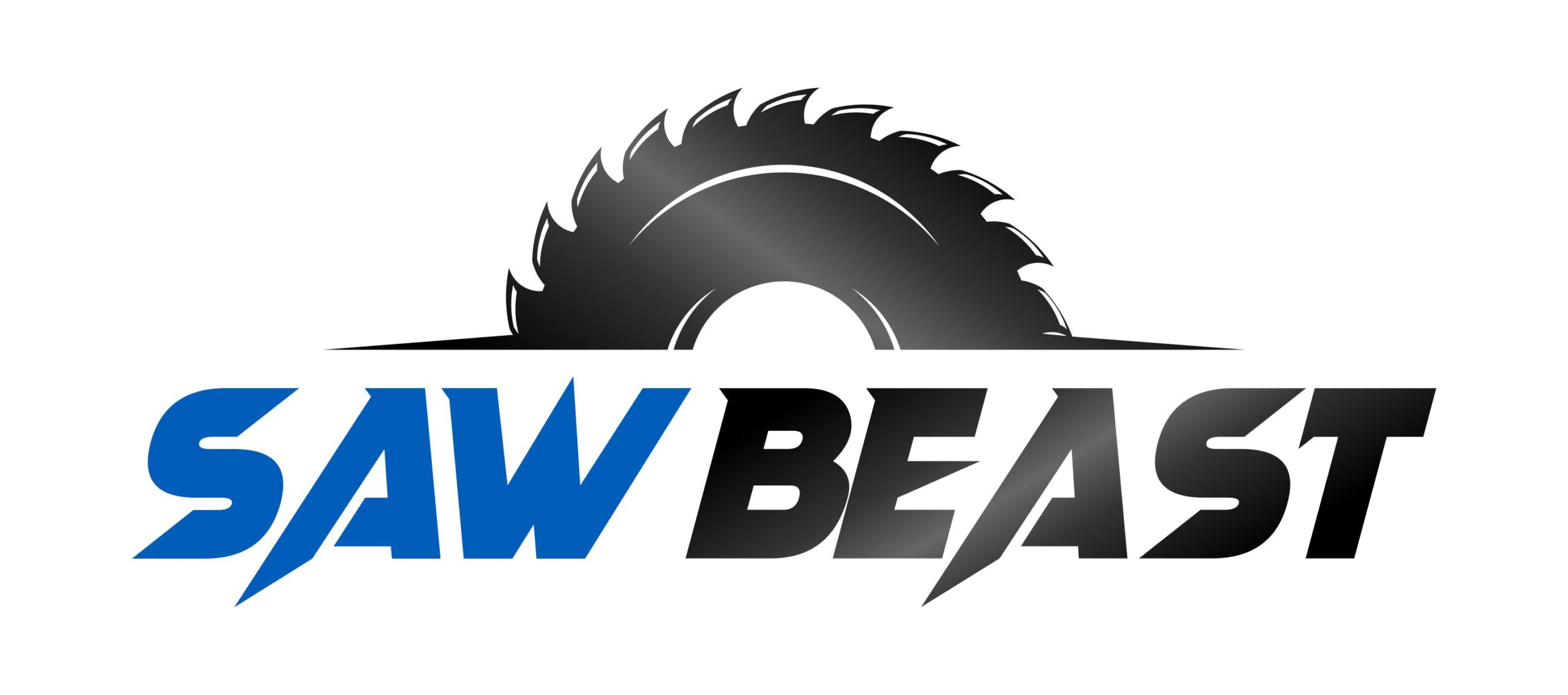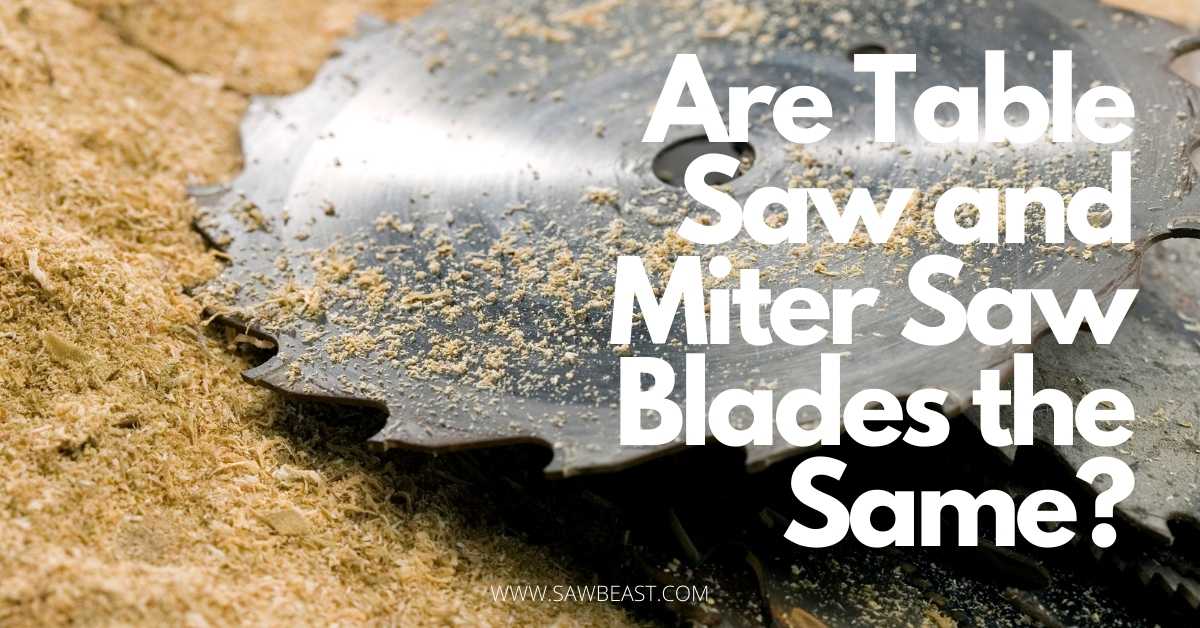Woodworkers are in absolute awe of the Table saws and Miter saws. These power saws have changed the working trends in the wood industry completely.
Every professional in the industry owns a miter saw and a table saw because both of these saws excel in different jobs. Beginners are usually confused between the two power saws and sometimes purchase the wrong tool.
To help you differentiate between the two saws, we have compiled this guide highlighting the differences between them so you do not end up confusing both.
Table saws and Miter saws are suitable for different purposes; hence, it is essential to understand the working of both saws so you can choose the ideal one that fulfills all your requirements.
Table Saws
A table saw is a woodworking machine built in the form of a flat table with a slit cut in its middle to support the blade. A blade is attached to the saw’s motor that provides power and rotates it so you can make different cuts.
Using a table saw, the user pushes a piece of wood through the blade to make cuts. This allows you to work with massive projects as you can easily push and cut through large pieces of wood through the table saw.
However, the cuts made by a table saw are not as accurate as you would achieve through a miter saw. Table saws are well-known for ripping and making crosscuts.
It is a rip cut when you cut through the piece of wood along its grain. On the other hand, a crosscut is when you cut the piece of wood against the grain. A table saw is known best for these cuts.
Miter Saws
Miter saws are smaller than table saws because they are not built on a table, unlike table saws. They are highly portable and easy to carry due to their compact size. You can move the miter saw to different workstations and fix it onto a table to start working immediately.
A miter saw has a swingarm that keeps moving up and down. Various cuts can be made using the blade attached to its swingarm. You only need to position the blade at the desired angle where the cut is required and then let the miter saw cut the piece of wood.
The advantage of having a swingarm is that it makes it easy to position the blade and make precise cuts.
Just like a table saw, you can also make various cuts using a miter saw. While a table saw can only make a rip or a crosscut, a miter saw can make several cuts, such as straight, angled, bevel, and combination.
However, you might not be able to make a rip cut using a miter saw because you do not push the wood through a miter saw blade; instead, you place the piece of wood beneath the blade and cut through it. A miter saw might be able to make cross cuts but only for small and thin pieces of wood.
Are Table Saw and Miter Saw Blades the Same?
You can list many differences between a table and miter saws because they excel in performing different jobs. You might have identified a few differences by going through the basic definition of both kinds of saws.
This section focuses on the major differences between a table saw and a miter saw.
1. Table Saws can make larger and longer cuts.
During a cut, the table saw’s blade remains stationary, and you need to push the piece of wood through it to achieve your desired cut. This allows you to even work on massive projects and get creative with different sizes of wood.
Cutting large pieces of wood has become easier now with the table saws.
2. Miter saw can perform cuts as long as its diameter.
A miter saw is moved and brought to a position where a cut is to be made. And the blade goes through the piece of wood beneath it to achieve the cut.
Hence, you can estimate that the maximum size of the cut you can achieve will equal the diameter of the miter saw blade. Since you cannot push or pull wood through the miter saw, the blade size is the maximum size of the cut you can get.
3. Miter saws can make angled cuts.
Miter saws are well-known for performing angled cuts. You can position the head of the miter saw blade to any angle you desire and make a cut accordingly.
The swingarm of the miter saw makes it easier for you to position the blade.
4. Miter saw performs bevel cuts.
Bevel cuts are special cuts where you cut a sloped edge instead of a flat edge of your wood piece. For this, you have to tilt the head of the miter saw laterally and make a bevel cut.
Bevel cuts are easier to cut when using a Miter saw as they are perfect for the job. Although you can cut angles using a table saw as well; however, it requires a lot of skills and practice to achieve a precise cut.
5. Table saws are less precise than Miter saws.
You place the piece of wood beneath the blade of the miter saw to make a cut. This allows you to easily make more accurate cuts, even if they are very small.
However, with table saw, your blade is fixed in the middle of the table, so you push wood pieces from behind the blade to make cuts.
This can create uneven cuts if you apply varying pressure while pushing the wood piece through a table saw. Hence, we can conclude that a miter saw makes accurate cuts compared to a table saw.
6. You might experience a dangerous kickback with a table saw, but not a miter saw.
You might experience a kickback when using a table saw for several reasons. Kickbacks are dangerous events, and these either pull the user’s hand towards the blade or throw the piece of wood back at them.
This can lead to serious injuries and can be lethal. The risks involved when using a Milter saw are different and less dangerous.
You can experience injuries from a miter saw and they can occur when you switch the hand holding the wood with the hand lowering the blade. However, these are not as dangerous as a kickback.
Are miter saw and table saw blades interchangeable?
Now that you know the difference between the two saws, you can identify that both are good for basic cuts, but each excels in different cuts. You must be super careful to use a miter saw, and table saw blades interchangeably.
When replacing a miter saw blade with a table saw blade, you must be careful about the tooth count. For instance, a blade with 60 teeth or more will make smoother and finer cuts compared to a 24-tooth ripping blade. Secondly, the hook angle is different in both the saw blades. Hook angle refers to the angle of attack and aggressiveness of a blade.
Ripping blades have forward-leaning hook angles, but this might not work if they are used on miter saws as they could lift the workpiece up.
Crosscutting blades use less aggressive, back-leaning hook angles that are better for miter saws. Blades with a hook angle less than 7 degrees are preferable for miter saw blades.
Kerf thickness is vital when interchanging the blade between miter and table saw. Miter saws have less power than table saws and might slow down upon using a full-kerf saw blade.
So it would be best to look into kerf thickness before interchangeably using a miter saw and table saw blade.
Conclusion
Understanding the working of both saws and their features is essential so you can choose between them according to your requirements. Professional woodworkers usually have both kinds of saws in their workplaces.
However, as a beginner, you should purchase either one, depending upon the projects you are starting with. If you wish to build smaller, detailed projects with angled cuts, go for a miter saw and if you want to build larger projects with less precision, purchase a table saw.

